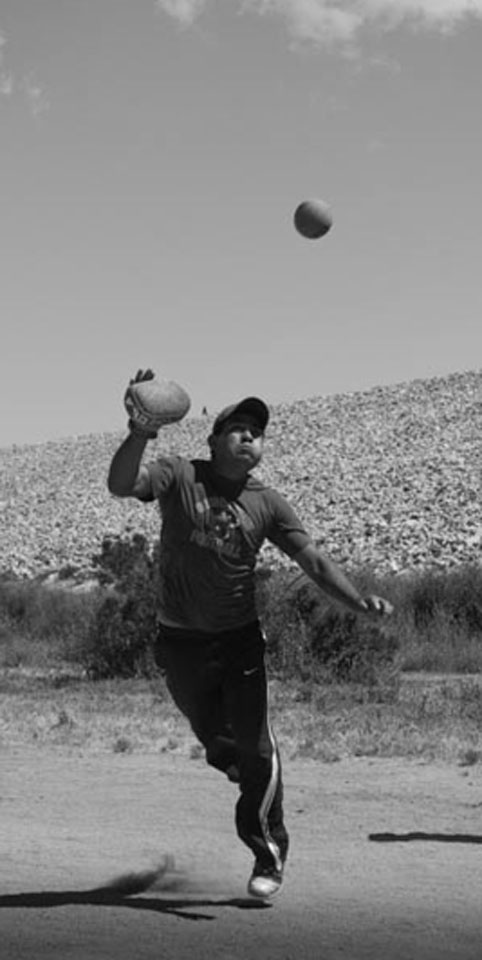CSUN Student Creates Exhibit to Honor Indigenous Ball Game from Oaxaca, Mexico

Pelota Mixteca players compete in Hanson Dam in the San Fernando Valley. Photograph courtesy of Suzanne Scheld. Photography by Leopoldo Peña and Daniel Oliveras de Ita at The Museum of the San Fernando Valley.
A California State University, Northridge anthropology student is celebrating an indigenous ball game from Oaxaca, Mexico, with a research-based photography exhibit in the San Fernando Valley.
Paula Mota’s exhibit, “Pelota Mixteca in the San Fernando Valley,” is open to the public until the end of the year at the Museum of the San Fernando Valley, located at 18860 Nordhoff St., Northridge. Mota’s exhibit showcases the indigenous game through photographs that depict the sport’s history.
“A lot of what I focus on is about community and community resistance,” said Mota, an anthropology graduate student in the College of Social and Behavioral Sciences. “I wanted the exhibit to be a place where people could talk about the game because my research can be theoretical and includes a lot of jargon. Photography is accessible, so it gives the players a platform. The reception gave the players a chance to talk about the game.”
Pelota Mixteca, which directly translates to “Mixtec ball,” is named after the region in which it originated in the state of Oaxaca, Mexico. It is a game similar to tennis or volleyball in terms of its scoring, according to Mota.
The game consists of anywhere from five to 10 players competing at a time on a ball court with a point system similar to tennis or volleyball. One team plays offense while the other plays efense within a boxed-court than can be up to 100 meters wide. Players wear handmade gloves that can weigh up to 15 pounds to catch a rubber ball that can only hit the ground once or can go back and forth without hitting the ground. Players can score a point by making the opposing team lose control of the ball – if it bounces twice or goes out of bounds to the end of the field.
Mota was halfway through her graduate program in 2015 when she walked past the park near Hanson Dam and saw men playing an unfamiliar game. She immediately wanted to learn more about it. She conducted research and found more information about Pelota Mixteca. Mota later visited Mexico to familiarize herself with the sport and returned to the park in 2016 to interview the players.
“My parents just came back from Oaxaca after I visited the park,” she said. “It was serendipitous. I went to Oaxaca and met a lot of players where they play at El Tech (The Technological University in Oaxaca), a university in Mexico. I had to know my stuff. I went back to the park where they played in 2016. There was a guy sitting there and I used the term ‘jugada,’ which is a jargon term for their game. I told him I went to Oaxaca and saw people playing.”
Mota’s research contains themes of transnationalism, identity and citizenship and what role ‘pelota mixteca’ plays in all of these areas to convey how immigrant communities are adapting to life in the U.S.
The exhibit’s subjects are members from three teams who come from all over Los Angeles to compete in the San Fernando Valley. Some of the players are from different parts of Oaxaca, while others commute from other regions of Mexico, Oxnard, Santa Barbara, Oceanside, Gilroy, Santa Cruz and Fresno to compete in the game.
Mota described the sport as more than just competitive. She said it creates a sense of community.
“It is a space where they gather, where they can talk about what happens ‘back home,’” Mota said. “Teams are composed of family members, so it is a community space. They are very welcoming and very open to sharing. Field work [for my research] is just like hanging out. They have become like a part of my family.”
For more information on Mota’s exhibit please visit: http://museumsanfernandovalley.blogspot.com/2018/11/pelota-mixteca-new-museum-exhibit.html

 experience
experience